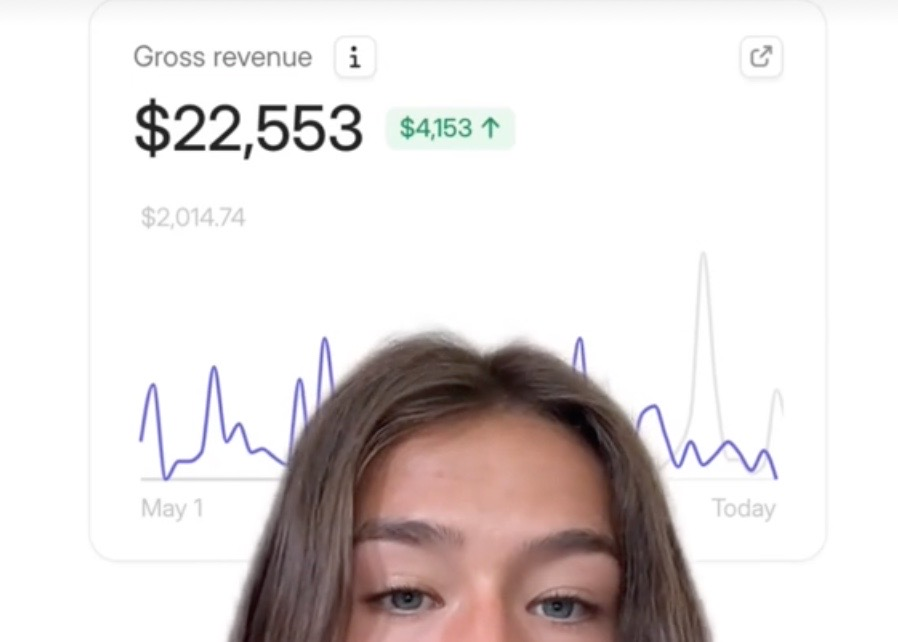Can you really make passive income with stock photography in 2025?
Can you really make passive income by uploading photos to stock image sites? Inspired by viral success stories, I gave it a try, and quickly ran into reality. In this article, I share my firsthand experience and in-depth research on leading stock photo platforms like Shutterstock, Adobe Stock, Alamy, and Dreamstime. We’ll explore what it actually takes to earn money through stock photography, what the odds are for beginners, and how to optimize your content if you still want to give it a shot.

Disclaimer: All pricing, royalty tiers, thresholds, and policy details cited here were last verified in March 2025. Platforms update terms frequently. Readers should confirm current pricing, royalties, license types, payout thresholds, and usage policies on the official contributor pages. If you find a discrepancy, please let me know and I will update this page.
Expectations vs reality
It was back in January or February 2025. Like many people, I was intrigued by the idea that a few casual smartphone photos could bring in meaningful income on stock marketplaces.
For years I told myself I didn’t have enough quality, volume, or niche expertise to succeed with stock. Yet after 25+ years in visual production, I watched TikTok creators claim serious money from casual snapshots. And now, with AI tools at hand, new ways to create high-quality imagery were within reach.
So I thought, “Let’s catch up.”
I dug up some of my best photos and lined up Shutterstock, Adobe Stock, Alamy, and Dreamstime, platforms I’d been using as a customer for years. Now, it was time to see the other side.
If you’ve never uploaded to a stock site before, it takes work! Most photos need retouching. Every single one requires a unique title, a well-written description, a full list of SEO-friendly keywords, and accurate categorization. Get any of it wrong, and your image gets rejected.
Over the weekend, I managed to upload 70 images to Dreamstime, and just a handful to the other platforms. Still, I felt a spark of excitement: if I earned even a single dollar from this, it would be passive income. Something I could build on over time.
A few weeks passed and I hadn’t earned a cent. Something felt off, so I did what I should have done from the start: I fact-checked the viral claims and started researching the stock photo business.
It turns out, from my perspective at least, I had been wasting my time.
Now, it is possible to make money uploading photos. But it often takes years of consistent effort and thousands of images… all for what typically amounts to a modest return.
Unless, perhaps, you make this your specialty, and get very good at it.
This article looks at the viral claims and breaks down what works: best practices, SEO tips, content strategy, platform selection, and realistic planning.
Truth, myths and real numbers

Viral claims: the $20K/month stock photo myth
Sensational claims made on TikTok, like that of a student named Jade, touting she earns $20K+ per month from casual iPhone photos, have fueled a surge of interest in passive income through stock image sites.

In her videos, Jade even shows a single scenic photo netting $26,000 over two years (4,000+ downloads), attributing it to smart tagging and keywording. This narrative has led many to believe they’re sitting on a goldmine of images on their phones.
However, industry veterans and community members are highly skeptical of these rosy claims. On a Reddit forum, experienced contributors flatly labeled Jade’s $20K/month story as fake and a scam.
Alex, from Brutally Honest Microstock, published this article debunking her claims, showing how influencers like her prey on new stock photographers.
In reality, seasoned contributors with tens of thousands of high-quality images rarely come close to that kind of monthly income. The consensus is that such viral success stories are outliers (if not outright exaggerations) and not representative of typical results.
In fact, Jade’s real monetisation might be coming from selling her how-to guide to followers, rather than from stock photo royalties alone. The harsh truth is that for the vast majority of contributors, stock photography is not a quick path to riches but a slow burn that requires patience, volume, and strategy.
How big are the major stock image libraries?

To understand the landscape, let’s look at the major stock content platforms and their library sizes. The stock photography market is huge and competitive, dominated by a few big players hosting hundreds of millions of images (and increasingly, videos and illustrations).
Here’s a summary of the approximate content volumes on popular platforms as of 2023–2024:
- Shutterstock || ~757 million images; ~52 million videos.
- Adobe Stock || ~520 million assets (photos, illustrations, etc.), includes a large influx of AI-generated images in recent years.
- Getty Images || ~465 million images (including a 135 million analog archival collection). Plus millions of videos and editorial photos via iStock/Getty.
- Alamy || ~350 million images & vectors; ~10 million clips. (Known for its diverse editorial content and higher-res files.)
- Dreamstime || ~282 million images (plus a growing footage and audio library).
- Depositphotos || ~265 million images and media files.
- 123RF || ~210 million images, illustrations, and clips.
- EyeEm || ~160 million images (user-generated photography).
These numbers illustrate just how saturated the market is. For example, Shutterstock alone adds hundreds of thousands of new images each week to its library of three-quarters of a billion files.
Adobe Stock’s collection has exploded, thanks in part to contributors uploading AI-generated art, over 313 million AI images AI images were noted in its library as of 2025.
Getty Images (including iStock) also boasts hundreds of millions of assets, spanning historic archival photos to contemporary digital shots. Even mid-tier players like Alamy and Dreamstime host a few hundred million images each.
What do these figures mean for a newcomer? In short: immense competition. When you upload a photo, it enters a sea of similar content (Shutterstock’s library, for instance, is growing toward 500+ million images by 2025).
Your image is a needle in a haystack, and discoverability becomes a real challenge. This is why optimising metadata (titles/keywords) and targeting niche subjects (where there might be relatively less supply) is crucial. More on that in the best practices section.
But first, let’s look at what it actually takes for contributors to earn money in this crowded marketplace.
Effort, portfolio size, and earnings

How many images do you need to make regular income? Stock veterans will say: a lot.
Successful earners usually have built up portfolios in the thousands over multiple years. They treat stock like a part-time job or serious hobby, continually shooting, editing, and uploading.
Let’s break down what contributors report in terms of portfolio size, time invested, and earnings:
Bottom line: The odds are stacked such that a beginner with a small portfolio has a low chance of substantial income. Uploading a dozen photos and waiting for passive income will almost certainly lead to disappointment. To even reach the modest milestone of, say, $100 per month, you likely need on the order of a thousand high-quality, marketable images online (and that assumes diligent keywording and some time for sales to accumulate).
Many contributors don’t hit the minimum payout thresholds for months or years, if ever. Patience is key: stock photography is a slow earner that builds gradually. It’s more like accruing royalties over time rather than striking it rich with any single upload.
What are your earnings per download?

It’s also important to understand how stock agencies pay contributors, as this affects the effort-to-reward ratio. Most microstock platforms operate on a royalty or subscription model that yields only small fractions per download for the photographer:
The key point is that royalties per download are small on microstock. Earning $100 in a month might mean your content was downloaded a few hundred times across various sites. That in turn requires a sufficiently large and attractive portfolio.
The days of a single photo netting you big bucks regularly are mostly gone (except in the rights-managed or exclusive macro stock world, which is a tough club to break into). The microstock model is about selling lots of images at low prices. As a contributor, you’re playing a high-volume game of pennies that hopefully add up.
Now that we’ve covered the gritty stats and payout structure, if you’re still interested in pursuing stock photography, let’s talk about best practices to maximize your chances of success in today’s market.
Best practices for stock photo contributors in 2025

Even though it’s challenging, it’s not impossible to earn some side income from stock photography if you go in with a smart strategy. Here are some best practices and tips, covering SEO, content strategy, platform selection, and realistic planning, to improve your effort-to-reward ratio:
1. Master SEO for images: titles, keywords and descriptions
With millions of files competing for attention, how you keyword and title your images heavily influences whether buyers ever find them. Here’s how to optimize your submissions:
Good keywording can significantly boost an image’s downloads over time. It’s often said that 20% of your images will get 80% of the sales: those tend to be the ones that hit the sweet spot of being in-demand content with great keywords. Spend the extra few minutes per image to really maximize the metadata; it can pay off with more visibility.
2. Shoot what sells: content trends and demand in 2025
In such a saturated market, content selection is crucial. You want to produce images that buyers need, but also find niches that aren’t completely over-served.
Here are tips on what to shoot (and what not to shoot):
In summary, to choose content wisely: balance your passion with market needs. Shoot subjects you know well or have access to, but frame them in ways that are useful to buyers (storytelling elements, clear copy space for text, etc.). And always keep quality high, sharp focus, good lighting, and composition are still must-haves to pass agency inspections and attract buyers.
3. Choose your platforms strategically
Not all stock agencies are equal, and you don’t have to contribute to every single one. It’s often better to focus on a few of the top platforms that generate the most sales, rather than spreading yourself too thin. Each site has its pros and cons:
In summary, to maximise earnings in 2025, focus on Shutterstock, Adobe Stock, and Getty/iStock as your primary outlets: these collectively command the bulk of the market and will likely make up the majority of your sales. Use others as supplemental. And always track your time vs return on each platform; you might find, for example, that spending time to upload to a site that yields only $5 a month isn’t worth it, and you could invest that time in creating new content instead.
4. Be realistic: time investment, patience and strategy
Lastly, set realistic expectations and approach stock photography strategically rather than emotionally. Given everything we’ve covered, here are some final pieces of advice for aspiring stock photographers in 2025:
My take

The popular notion of uploading a bunch of photos and kicking back to collect thousands in passive income is, for most, a fantasy.
Stock photography in 2025 may still offer some opportunities, but only for the most committed and astute professionals: those capable of consistently producing high-quality content and identifying niches not already flooded with competition.
The data and contributor feedback show a clear picture: it takes a substantial portfolio (often several thousand images) and consistent effort over years to generate meaningful, regular earnings. Even then, the income is usually modest: a supplemental side hustle rather than a windfall.
Keep in mind, if you’re starting today, factors like the rise of AI-generated images may reshape the stock image market entirely, potentially accelerating its decline in the near future.
That said, for creatives who enjoy photography and are willing to put in the work, stock agencies still offer a global marketplace for your visuals. You can make money while you sleep, just expect cents per night, not dollars.
Over time, that passive income can grow, just don’t quit your day job based on a viral TikTok.
🎧
Prefer to listen? This topic is also explored in one of my podcast episodes:
Stock photography FAQ
Sources:
- Brutally Honest Microstock (Alex Rotenberg): TikTok Stock Scam Exposé (Mar 27, 2025)
Alex’s blog post debunking Jade’s $20K/month claim. (Details Jade’s identical script with another influencer, lack of proof, likely income from selling courses.) - Reddit: r/stockphotography Discussions (2023–2024):
Community threads reacting to viral claims and sharing real earnings. e.g.:
“Claims to earn $20k/month – is this legit?” (2024, Alex, see above). Users label Jade a fraud and note her course sales;
“My microstock journey so far”: A new contributor (Reve1981) reports ~$100 after starting in 2023;
Various comments by “cobaltstock” and others: Estimate income ranges (e.g. 50–400 USD/month for 12k–20k files) and the huge portfolio needed for $1K+ months. - Brutally Honest Microstock (Alex Rotenberg, 2025):
Firsthand accounts of stock income. e.g.:
“Nelson Antoine’s Feb 2025 Report”: Longtime journalist earned $211 on ~4k photos/1.7k videos that month.
Alex’s own note: 20k photos/4k videos yielding ~$750/mo. These illustrate typical earnings for large, established portfolios. - Shutterstock Official Press Releases: Q3 2023 Financial Results (Oct 31, 2023)
States 757 million images and 52 million clips in the collection.
Contributor Milestone Release (Dec 2019): Over $1 billion paid out to 1+ million contributors (average ~$1k each). - Shutterstock Press: Library Growth/Weekly Uploads
Press releases via PR Newswire (Jan 17, 2023): “…over 2 million contributors… adds hundreds of thousands of images each week… more than 424 million images [at that time]”. Confirms the massive influx of new content continuously. - Adobe Stock Stats: StatsUp (Analyzify)
Aggregated Adobe stats (updated 2025) noting “over 520 million assets on Adobe Stock”.
Also, Adobe’s official Fast Facts 2023 list 450+ million assets (246M photos, 166M vectors/ills, 31M videos), reflecting rapid growth with AI imagery by 2024–25. - AI Content Surge: Adobe Stock: PetaPixel (May 22, 2025)
Article “Almost Half of Adobe Stock Images Are AI” reports 313 million AI images on Adobe Stock by April 2025 (vs 342M real photos). Cites Robert Kneschke’s tracking data, showing explosive AI growth from only ~8.5M AI images in mid-2023. Illustrates how generative AI flooded the collection within 2 years. - Getty Images: Library Size: FOCAL International 2023 report
States Getty’s archive at 520 million assets, including 135M analog archival images, plus over 23M video clips. Confirms Getty’s scale (via a Getty archival highlights blurb). - Alamy: Collection Size & Commission: Alamy FAQ/Help
“…over 350 million stock photos, 10 million footage clips, 60,000+ contributors worldwide”.
PetaPixel (Dec 2018): “Alamy cutting commission from 50% to 40% for stock photographers” – documents Alamy’s royalty change (non-exclusives now 40%). - StockPhotoSecrets: Dreamstime site (2025)
Homepage counter “312 million stock photos…world’s largest stock community”. Noted “over 270 million images” at that time. Shows Dreamstime’s growth into the 200+ million range. - Depositphotos: Collection Size: Depositphotos Blog
“300M+ Files” announcement (Dec 2024) celebrates crossing 300 million files in the library. Earlier post (Dec 2022) marked 250M files milestone. Demonstrates the rapid expansion (driven by contributor uploads and perhaps AI content). - 123RF: GreatBigPhotographyWorld.com – “33 Best Stock Sites” (2025)
Notes 123RF has ~210 million royalty-free images, illustrations and videos in its catalog. Confirms the figure used for 123RF. - EyeEm: Collection Size & Sale: TechCrunch (Oct 12, 2023)
Article on Freepik acquiring EyeEm, stating EyeEm’s photo library totaled about 160 million images and ~150k photographers at acquisition. This source verifies EyeEm’s scale mentioned in the article. - Shutterstock Royalty Cut Backlash: Inside Imaging (June 5, 2020)
“Shutterstock shares middle finger with contributors” – details Shutterstock’s new earnings structure in 2020, with $0.10 payouts per download under some subscriptions (down from $0.25–$0.38) and universal reset to the lowest tier each year. Shows the “mid-2020 pay cut” referenced in the article and the contributor backlash that ensued. - Adobe Stock Royalty Info: Xpiks (Contributor tips site)
Confirms Adobe Stock’s flat 33% royalty rate for photos (and 35% for videos), translating to minimum ~$0.33 per standard photo download for contributors. Reflects the article’s statement on Adobe’s payouts. - Microstock Forum: $10k/Month Estimate: MicrostockGroup thread
Discussion on “how many images to earn $10k/month.” A senior member bluntly says “to make $10K on Shutterstock alone, you’d need at least 30–50k images”. Backs up the article’s point that such income requires a huge portfolio. - Payout Averages: Shutterstock Contributor Earnings Report 2019 (via PRNewsWire)
Marked the $1B payout milestone and noted over 1 million contributors on the platform. From this, the average lifetime earning per contributor (~$1,000) was derived, illustrating how skewed the earnings distribution is (few make a lot, most make little).
Great to have you here! Feel free to leave your thoughts in the comments.
Hello, I’m John Dawson, a graphic designer (for a little while longer) and the writer behind DawsonDecoded, where I share hands-on insights on AI, blogging, social media, and whatever else crosses my mind.”
Get new posts by email when they’re worth sharing.
No spam.
You might like:
Words that are mine
Reading Time: 2 minutesAfter months of writing mostly for algorithms and sales funnels, I stopped obsessing over online income and started writing in my own voice.
Eight months chasing a mirage
Reading Time: 3 minutesEight months in, I’m changing course. I’m going back to casual blogging and stepping away from the commercial / affiliate angle. The pressure’s off, and I finally have my life back.
How to start a blog and find your first readers (part 3)
Reading Time: 9 minutesMake it look and feel professional: pick a lightweight theme, set a basic brand kit, and publish the must‑have pages.
How to fact-check your blog post
Reading Time: 5 minutesFact-checking protects both you and your readers. This simple process allows you to separate facts from opinions, verify claims, and add safeguards so your published content remains accurate, credible, and trustworthy.
Can you still make a living from a blog in 2025?
Reading Time: 5 minutesBetween viral promises and reality, can a blog still generate a viable income in 2025? Here’s what the numbers say.
Blogging with AI
Reading Time: 4 minutesAI can speed up ideas, drafts, and edits, but it should assist rather than replace you. Keep your voice, verify facts, and add your perspective so posts stay authentic and useful.
How to start a blog and find your first readers (part 2)
Reading Time: 8 minutesIn Part 2 of this beginner’s guide, we move from idea to reality by getting your blog online. You’ll learn what domains and hosting actually are, and how to install WordPress in just a few clicks.
From BGE to “Launch to $10K”, Enfroy’s strategic shift signals the end of SEO-first blogging
Reading Time: 4 minutesAs of November 2025, BGE runs as a free masterclass and Enfroy funnels to Launch to $10K. With AI Overviews reducing clicks, commercial blogging is rarely a standalone model anymore.
How to start a blog and find your first readers (part 1)
Reading Time: 6 minutesLearn how to choose a blog niche you’ll love and a name that can grow with you, the first step in building a successful blog.
The dark side of online income: how scammers are using AI and social media to make millions
Reading Time: 7 minutesScammers use AI and social media ads to create fake funnels that mimic legitimate ones. This post explains how they work and what ethical marketers can learn.












Leave a Reply